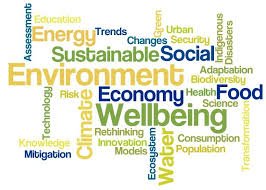2015 is going to be a very big year for international development. And this week provided a key inflection point as diplomats race to replace the Millennium Development Goals before they expire at the end of 2015.
First, some background on process. (Stay with me! This stuff is important. At the UN — like in many bureaucracies — process can dictate outcomes.) In June 2012, delegates descended on Rio for a big conference on Sustainable Development, known as “Rio+20.” The outcome document from this summit created a few different committees and “inputs” that member states agreed should determine how the MDG replacements will be determined.
Over the past two years, committees met, high level panels convened, advisory groups advised, and a massive public survey was undertaken. All those recommendations were submitted to the Secretary General to “synthesize” in a final report. Yesterday, Ban Ki Moon officially released that report.
The report is titled “The Road to Dignity by 2030.” It details, what exactly, he thinks member states should consider when they debate the substance of what will be known as the Sustainable Development Goals. The big headline from the Secretary General’s report was that he reaffirmed the 17 goals and 169 targets that a prior UN body had endorsed. (This was a group made up of about 30 UN member states that was broadly representative of UN membership as a whole. Ergo, their recommendations carried the most weight. Again…process matters!)
Some of these goals are wholly uncontroversial–if ambitious. The topline goal, for example, is to completely eradicate extreme poverty by 2030. This is something that the General Assembly will almost certainly coalesce around.
But there are key points of contention as well–like financing for development (i.e. how is this going to get paid for). Also, unlike the existing MDGs the proposed 17 SDGs place some requirements and responsibilities on the developed world. For example, while the top line goal of the proposed first SDG is to “eradicate extreme poverty for all people everywhere, currently measured as people living on less than $1.25 a day,” a currently proposed sub-target states that by 2030, countries “reduce at least by half the proportion of men, women and children of all ages living in poverty in all its dimensions according to national definitions.” In other words, rich countries would be obliged to substantially reduce their own poverty rates.
These are just a few of the points of contention that will need to be resolved before the end of next year. There are many others! For now, the release of Ban Ki Moon’s report serves as the starting gun for negotiations at the General Assembly. The finish line is the UN Summit next September. The next 10 months are going to be a whirlwind of diplomacy as these issues get sorted out before the MDGs expire.
For a deeper dive on the process and substance of the Sustainable Development Goals, I strongly recommend you devote 15 minutes to my podcast interview with expert Minh-Thu Pham of the UN Foundation.
